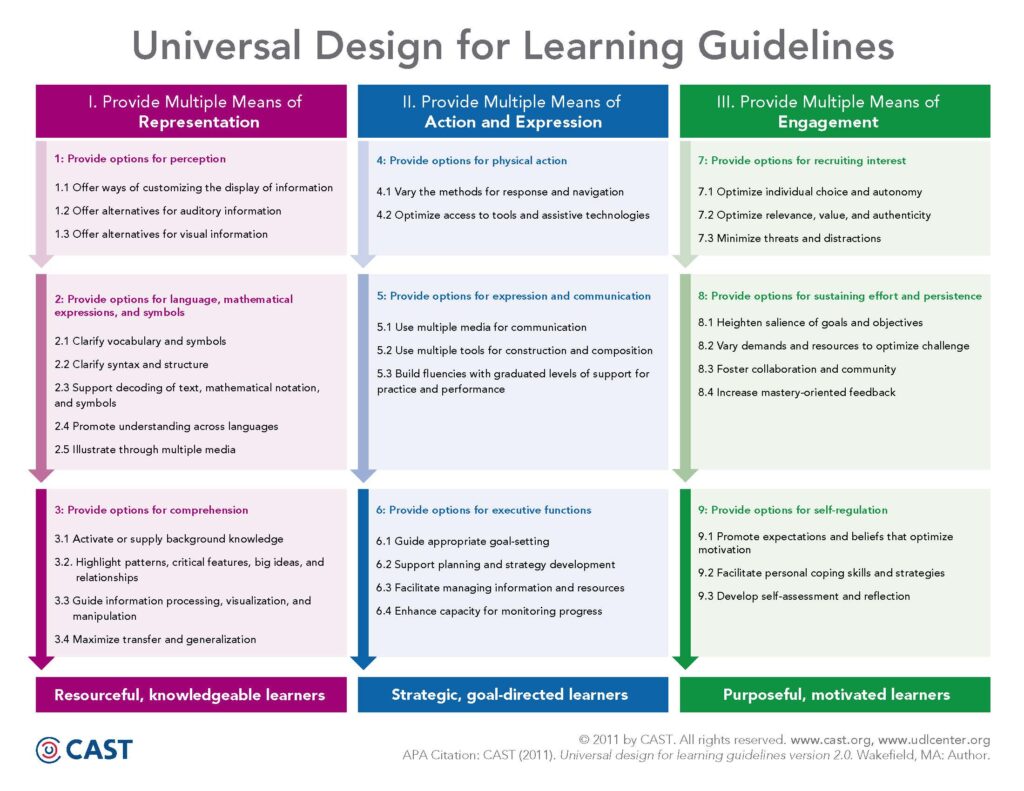Hello Nicole, Jarvis, Beliz, and Connor,
Below is a Peer Review of your “Misconceptions about Learners with Disabilities” Interactive Learning Resource (IRL).
Overview
I opted to review your IRL as the topic is one that resonates with me personally since my sister has a learning disability (LD). The creation of a learning resource to educate people on the misconceptions about LD’s is an important step towards combating biases. Additionally, I am happy to see a guide being developed for establishing inclusive learning environments.
Technical Suggestions
Initially upon reading your document, I was impressed with how organized and engaging the content was. As a result of reading your topic description, I was convinced that more advanced online learning resources were needed. My first technical suggestion is to specify what you are referring to in your first sentence: “These include an imperfect ability to ‘listen, think, speak, read, write, spell, or do mathematical calculations’(Antaga, Et al. 2019).” If you begin that sentence with “Learners with Disabilities” I think it will provide more clarity. My next technical suggestion would be to spell out the word “Learning Disabilities” at the beginning of each new section and then continue with the abbreviation afterward. The last technical suggestion I have is to double-check the sentences throughout the document that state any facts and to provide citations. If the information was gathered through another source, a citation is needed in order to avoid plagiarism.
Suggestion for a Rational
Your group wrote “A major belief is that they limit how successful an individual can be in school or their career. While LD’s can undoubtedly make things more challenging, with the right tools and guidance people can effectively work around them.” I think that this is a very powerful statement. I agree that we must offer students multiple ways to obtain information and express their learning. Although your group does not specifically mention it, I think your interactive learning design follows the Universal design for learning (UDL) model. Through human-centered learning, the UDL model aims to eliminate systemic barriers to equitable learning in any field or discipline (CAST Announces a Community-Driven Process to Update UDL Guidelines, 2020). Since your group’s IRL does not mention a specific rationale, I suggest including the UDL model to help explain why this resource is being created with inclusivity for all learners.
Feel free to watch the video below that explains more about the UDL model. I think it is very applicable to your project.
Structural Suggestions
Your group’s lesson subtopics seem to align with the assessments, good work! However, has your group considered condensing your learning outcomes to four instead of five? Since you have four subtopics, I think it would provide more clarity to maybe condense outcome #3 with #5. Both of these subtopics deal with critiquing the detrimental absence of accomodative features present in modern curricula. Another option would be to include a fifth subtopic so that each learning outcome has the chance to be fully expanded.
In relation to your lesson subtopics, your group might want to consider elaborating more in order to gain a full understanding. This would include detailed descriptions of the topics so that the reader can learn enough background in order to complete the assessment activities. Moreover, including the specific learning outcomes and activities within each lesson’s subtopics can benefit the structure of your resource. It can also provide more clarity for the reader.
Asessment Activities suggestion
In terms of the assessment activities, I might suggest including how each of these activities are specifically designed for inclusion. Regarding the interactiveness of the activities, I think your group created excellent avenues for students to engage with the material.
Criteria suggestions
I may have missed something, but it seems to me that your project does not include a learning context section or a learning theory section. Right now, the document is reading as though your guide is applicable to every grade or age. Per the assignment outline, I suggest including a specific section for the learning context so it is clear who your intended audience is. In addition, your group may want to include a description of the learning theory that will be underlying your resource. This would be either cognitivism, behaviorism, or constructivism. Due to the nature of your technology tools, I would suggest perhaps cognitivism as the theory focuses on learning strategies.
Final Thoughts
Lastly, it was interesting to read about your inclusion of a digital textbook that has multiple learning formats such as braille, flexible audio, and visual content. I am curious about how braille would function in an online format, is it perhaps used with a specific device?
Overall, I appreciated reading your resource, as the document is a great step in designing an inclusive environment for all learners.
I hope this feedback was helpful and well done!
-Mia






Recent Comments